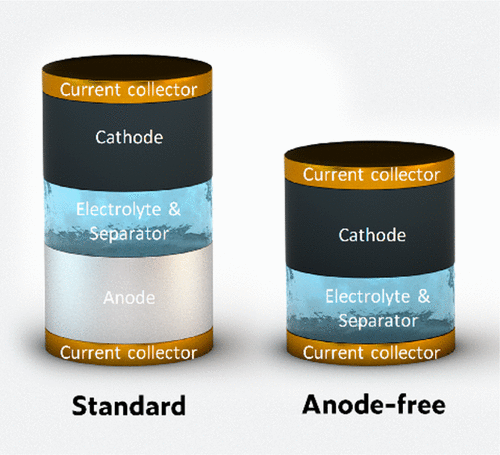Researchers have succeeded in developing a prototype anode-less zinc-based battery composed of inexpensive materials commonly found in nature
[Translation by Dr. Nachmani Moshe]

Sources of renewable energy, such as energy from the sun and wind, could reduce the modern world's reliance on fossil fuels. However, the first step in this must be the development of safe and cheap methods to store this energy for prolonged use and not just too much. Large lithium-ion batteries can fit this, but they suffer from safety issues and low lithium availability. Now, researchers have succeeded in developing a prototype anode-less zinc-based battery made of inexpensive materials commonly found in nature.
Batteries based on zinc in an aqueous solution have already been tested in the past in favor of using them for energy storage thanks to their safety and high energy density. In addition, the materials used to produce them are common in nature. However, the rechargeable zinc batteries developed so far required compressed metallic zinc anodes containing a large amount of zinc whose cost is increasing daily. In addition, these anodes tend to develop dendrites over time (deposits of zinc metal that settle on top of the anode during charging) which can lead to a short in the battery and a shortened shelf life.
A team of researchers wondered if a zinc anode was actually required. Taking inspiration from previous experiments with "anodeless" lithium and sodium batteries, the researchers decided to produce a battery in which a zinc-rich cathode is the sole source of the zinc layer along with a source of copper. In their innovative system, the researchers used a battery that includes a manganese dioxide type cathode inside which zinc ions, an aqueous zinc electrolyte solution and a copper coil were incorporated. During charging, metal atoms of zinc settle on top of the copper coil and during discharge, the zinc atoms are ejected from the copper coil releasing electrons that activate the battery. In order to prevent the formation of dendrites, the researchers coated the copper coil with a layer of carbon nanodiscs. This layer promotes a uniform coating of zinc, a result that prevents the formation of dendrites while increasing the efficiency of the deposition and emission of zinc atoms from the copper layer. The innovative battery demonstrated high rates of efficiency, energy density and stability, while returning approximately sixty-three percent of the original capacity after eighty charge and discharge cycles. The innovative design of the zinc-free battery opens a window to new research directions in the field of using zinc-based aqueous batteries for energy storage systems, the researchers say.
More of the topic in Hayadan:

2 תגובות
"Returning approximately sixty-three percent of the original capacity after eighty charge and discharge cycles"
That sounds really, really bad to me. Or is there something I didn't understand here. A 27% drop in capacity after only 80 charging cycles, this means that within a year the battery needs to be replaced.
or!!! finally
Finally, Dr. Nachmani writes the essence of things in relative depth that also explains them and not just the surrounding title. Keep it up. Want to deepen, understand, learn.